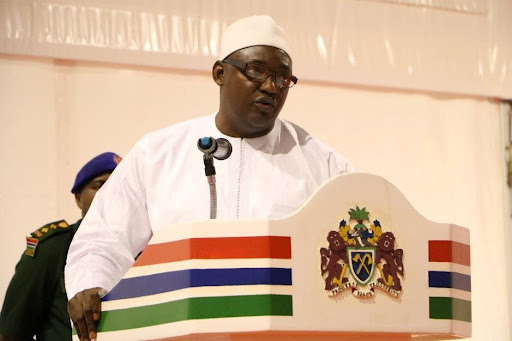
President Adama Barrow was sworn into The Gambia’s State House in January 2017 and succeeded former President Yahya Jammeh after ECOWAS Security Forces were invited into the country to secure a peaceful transition of power.
By 2018 the new government had prepared a blueprint for the country’s development dubbed The Gambia National Development Plan 2018-2021 (NDP).
Presidential Elections are scheduled to be held on Saturday, December 4, 2021, when President Adama Barrow will be seeking a second term in office. He will be challenged at the polls by 5 other Presidential Candidates making it the first time that the Gambia has had more than three Presidential Candidates.
But how many of the promises made to the Gambian people by the government have been achieved?
Promise
The NDP promised to reduce Unemployment from 29% in 2012 to 20% by the end of 2021 and reduce Youth Unemployment from 38% in 2012 to 30% by the end of 2021.
According to the NDP, all the statistics referred to in 2012 are from the Gambia Bureau of Statistics (GBOS). Below is a table from the NDP summarising Unemployment and Youth Unemployment targets.

Gambia Bureau of Statistics (GBOS)
The GBOS released unemployment statistics on 11th January 2019 after a Stakeholders Validation Workshop of the 2018 Gambia Labour Force Survey. Our reporter visited the GBOS on Thursday 2nd December 2021 and was informed that the 2018 Gambia Labour Force Survey was the most recent data available on unemployment. Our reporter was also informed that another study should be released soon on the Integrated Household Survey which would contain more up to date data on unemployment.
According to the Statistics released by GBOS “Unemployment rate is 35.2% (234,725 persons): by sex, 42.9% are males and 57.1% females; by place of residence, 76.6% are in the urban areas and 23.4% rural areas; by LGA, Basse recorded the highest proportion 24.6% followed by Brikama 21.7%”
“Youth Unemployment rate is 41.5%; 56.8% of our youth are Not in Employment, Education and Training (NEET). There are 54 % of youth in the urban areas and 45.9 % in the rural areas that were NEET. Most of the discouraged youth job seekers live in the urban areas (67.2 %) than in the rural (32.8 %) areas.”
The most recent Unemployment statistics indicate that Unemployment has risen from 29% in 2012 to 35.2% in 2018 which is a 6.2% increase in Unemployment Statistics amongst ages 15 to 64 years. Youth Unemployment has also risen from 38% in 2012 to 41.5% in 2018 which is a 3.5% increase in Youth Unemployment (15 to 35 years).
The statistics can be accessed on the GBOS Portal Social Media page and the 2018 Gambia Labour Force Survey.
At the United Nations 75th Session, President Adama Barrow addressed the General Debate on September 24th 2020 via a pre-recorded televised speech and in his address, President Barrow noted that “the Gambia’s Economy has shrunk to 2% GDP and it continues to contract. Our Tourism Sector which is a major employer and foreign exchange earner is devastated and unemployment is increasing rapidly”.
Speaking about the NDP, President Barrow noted that “implementation of our National Development Plan 2018 – 2021 has been hampered by the Pandemic as the UN Decade of Action for the implementation of Agenda 2030 has been undermined by the outbreak of the Pandemic.”



